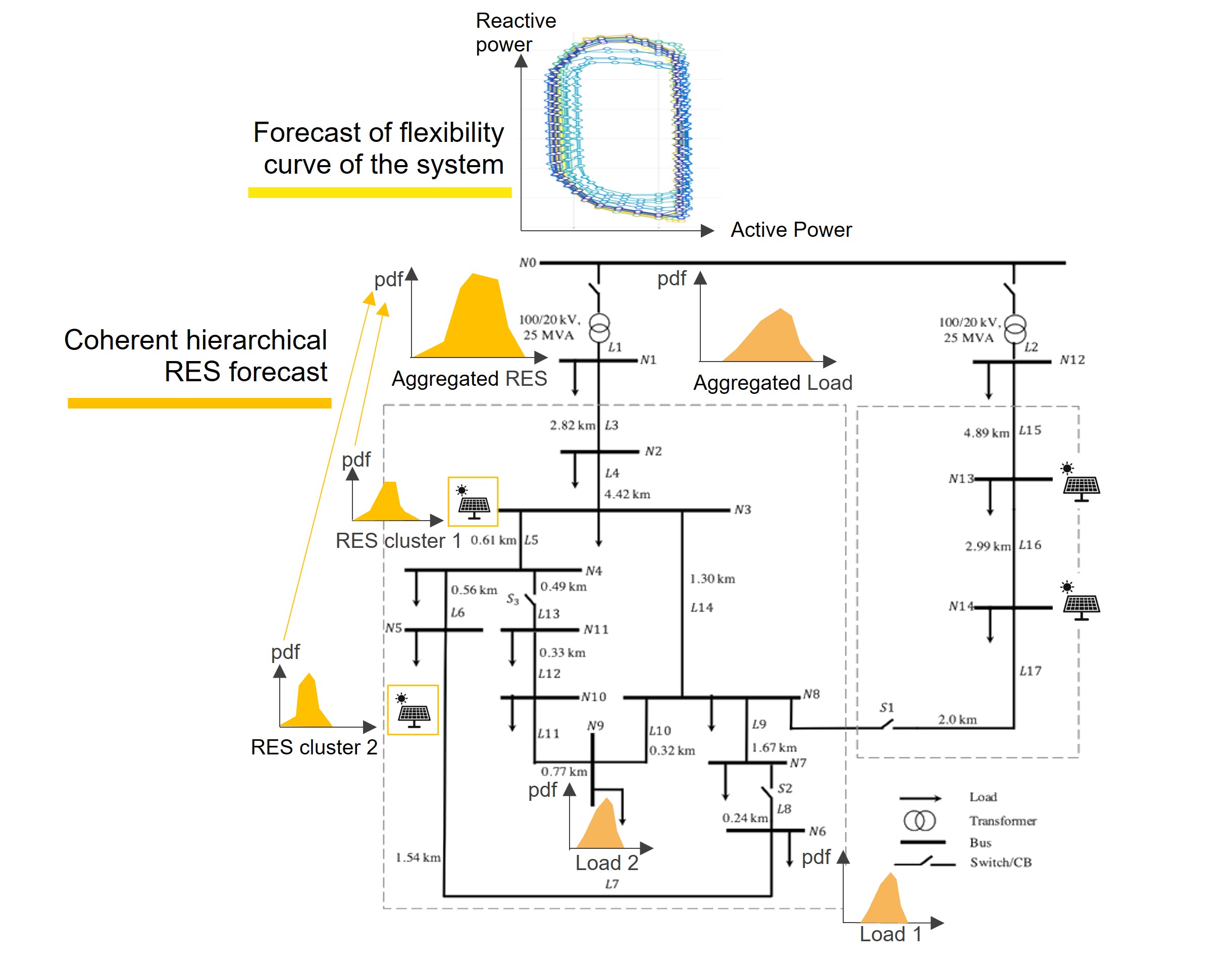Grid-Aware Flexibility Forecast at TSO/DSO Interface
Efficient identification of the flexibility at the interface between distribution and transmission systems
Partner: ARMINES
Actors involved: Distribution system operators, aggregators, providers of forecasting Solutions
Context |
There are efficient methods to model the flexibility of clusters of distributed energy resources that can be used by distribution system operator (DSO) to assess the capacity of their grids in providing ancillary services to the upper-level grid.
Therefore, electrical distribution grids will play a key role in providing ancillary services to transmission system operators (TSO).
Summary |
This use case refers to a set of controllable and stochastic resources in a distribution grid that are aggregated by topology to provide regulation services at their connection point with the upper-level high-voltage grid. The main requirements for this application are aggregation and activation of the flexibility of downstream controllable resources should respect the operational constraints of the local grid and account for power losses, stochastic resources (most notably PV in distribution systems) should be modelled accounting for their spatial correlation and time correlation (for multi-period aggregation).
Challenge |
How can data from distributed RES help power system operators?
Approach |
A set of active and reactive power set-points at the MV/HV interface that identifies the feasible operating points of the distribution network. This can be used as an abstract model of the flexibility of the network. The following figure illustrates the method, which is based on two main innovations:
-
- Coherent forecasts of distributed resources (e.g., PV plants) at the level of the plant and higher aggregation levels until the HV/MV interface.
- A grid-aware algorithm evaluates the flexibility curve associated to these forecasts, considering grid losses and possible constraints.

Innovative content of forecasting solution
The aggregation scheme will account for grid constraints and line losses. With respect to the existing technical literature on the identification of the flexibility of the TSO/DSO interfaces, we will have the possibilities of benefiting from real forecasts delivered by NWPs provider. In this context, a key challenge will be to design efficient aggregation strategies that can comprehensively capture the forecasting uncertainty of many distributed energy resources given that existing methods can typically handle up to a certain number of forecast scenarios.
KPI1 Fulfilment of voltage limits
KPI2 Fulfilment of branch current limits
